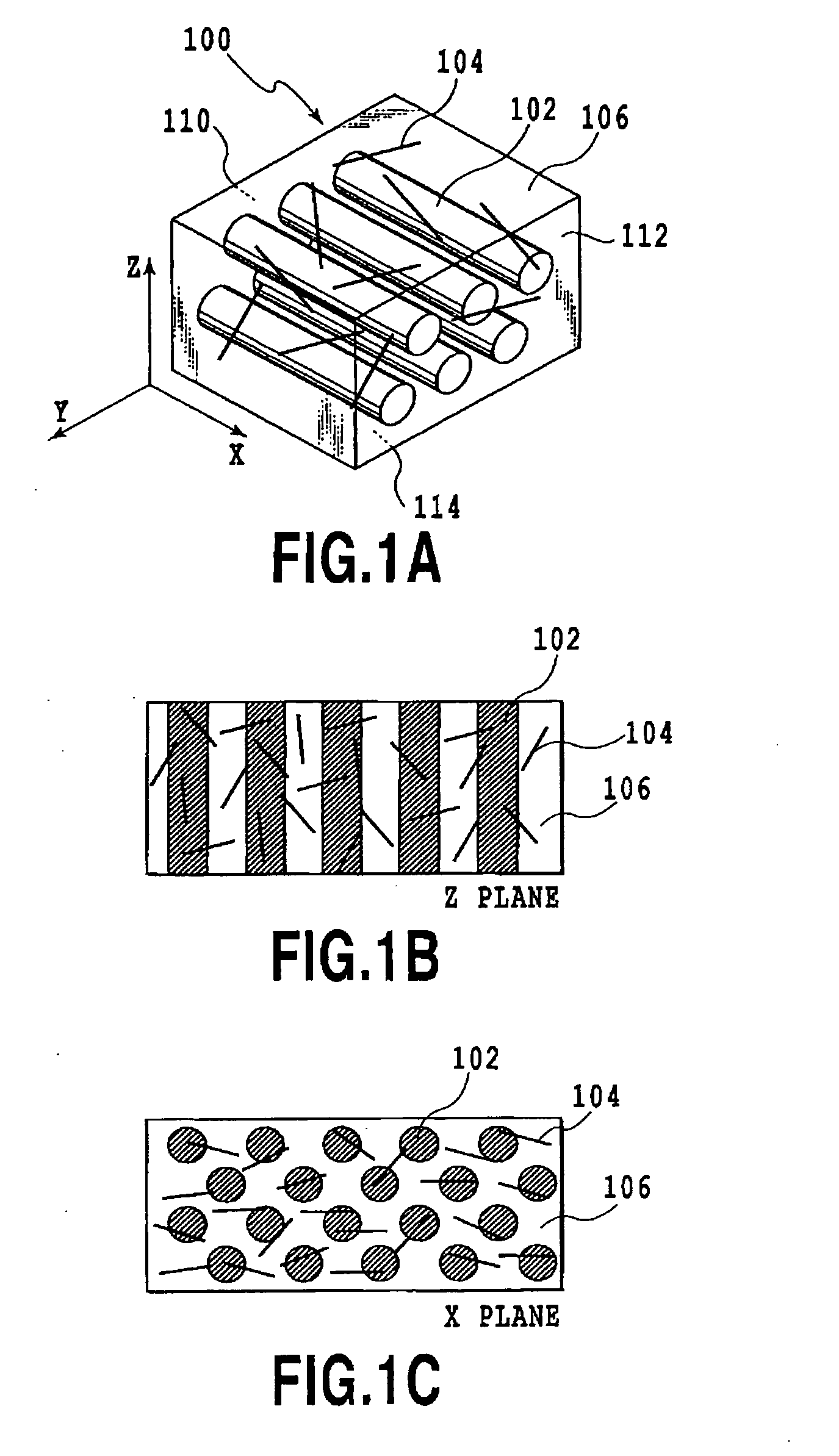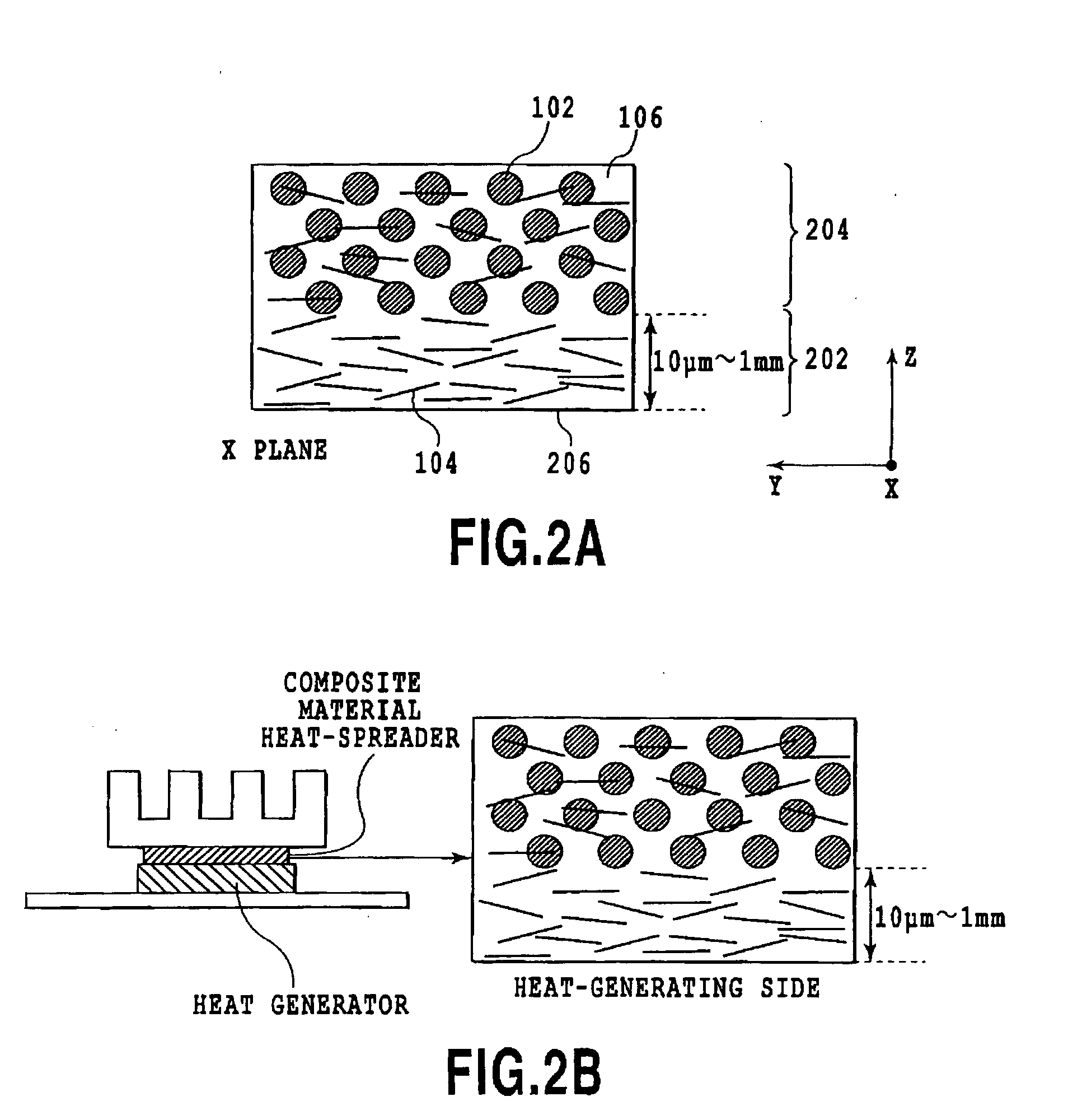Metal-Based Composite Material Containing Both Micron-Size Carbon Fiber and Nano-Size Carbon Fiber
- Summary
- Abstract
- Description
- Claims
- Application Information
AI Technical Summary
Benefits of technology
Problems solved by technology
Method used
Image
Examples
example 1
[0120]An example of a composite material containing aluminum, a vapor-grown carbon nanofiber, and a pitch-based carbon fiber is described.
[0121]An aluminum powder (manufactured by Showa Denko; average particle size: 5 μm), a vapor-grown carbon nanofiber (hereinafter “VGCF”, manufactured by Showa Denko; diameter: 150 nm; aspect ratio: 60 or more), and a pitch-based carbon fiber (diameter: 10 μm; 2000 fiber bundles) were used.
[0122]80 cc of isopropanol was added to 47.5 g of the aluminum powder and 2.5 g of VGCF and mixed for 1 hour using an ultrasonic mixer to yield an aluminum-nanofiber mixture.
[0123]Fiber bundles of the pitch-based carbon fiber were immersed in the thus-obtained suspension to allow the aluminum-nanofiber mixture to adhere to the fiber bundles.
[0124]The resulting material was air-dried for 24 hours. As a result, a fiber adhered with the metal powder and the nano-size carbon fiber containing 33.3 wt % of the aluminum powder, 1.7 wt % of VGCF, and 65 wt % of the pitch...
example 2
[0128]An example of a composite material containing aluminum and a vapor-grown carbon nanofiber is described.
[0129]An aluminum powder (manufactured by Showa Denko; average particle size: 5 μm), a vapor-grown carbon nanofiber (hereinafter “VGCF”, manufactured by Showa Denko; diameter: 150 nm; aspect ratio: 60 or more), and a pitch-based carbon fiber (diameter: 10 μm; 2000 fiber bundles) were used.
[0130]80 cc of isopropanol was added to 42.5 g of the aluminum powder and 7.5 g of VGCF and mixed for 1 hour using an ultrasonic mixer.
[0131]The resulting material was air-dried for 24 hours. As a result, a mixed powder containing 75 wt % of the aluminum powder and 15 wt % of VGCF was obtained.
[0132]The resulting mixed powder was charged into a graphite sintering die with a 20×20 mm square cross-section. The die was sintered using a pulsed electric current sintering apparatus in a vacuum of 10 Pa, at a pressure of 50 MPa and a sintering temperature of 600° C., to yield a composite material. ...
example 3
[0134]The composite materials obtained in the aforementioned Examples 1 and 2 were charged into a graphite sintering die with a 20×20 mm square cross-section. The die was sintered using a pulsed electric current sintering apparatus in a vacuum of 10 Pa, at a pressure of 50 MPa and a sintering temperature of 600° C., to yield a composite material having a surface region that is free of the micron-size carbon fiber. The resulting composite material was a composite material with layers that exhibit the properties obtained according to Examples 1 and 2, respectively.
PUM
| Property | Measurement | Unit |
|---|---|---|
| Length | aaaaa | aaaaa |
| Length | aaaaa | aaaaa |
| Fraction | aaaaa | aaaaa |
Abstract
Description
Claims
Application Information
 Login to View More
Login to View More - R&D
- Intellectual Property
- Life Sciences
- Materials
- Tech Scout
- Unparalleled Data Quality
- Higher Quality Content
- 60% Fewer Hallucinations
Browse by: Latest US Patents, China's latest patents, Technical Efficacy Thesaurus, Application Domain, Technology Topic, Popular Technical Reports.
© 2025 PatSnap. All rights reserved.Legal|Privacy policy|Modern Slavery Act Transparency Statement|Sitemap|About US| Contact US: help@patsnap.com



